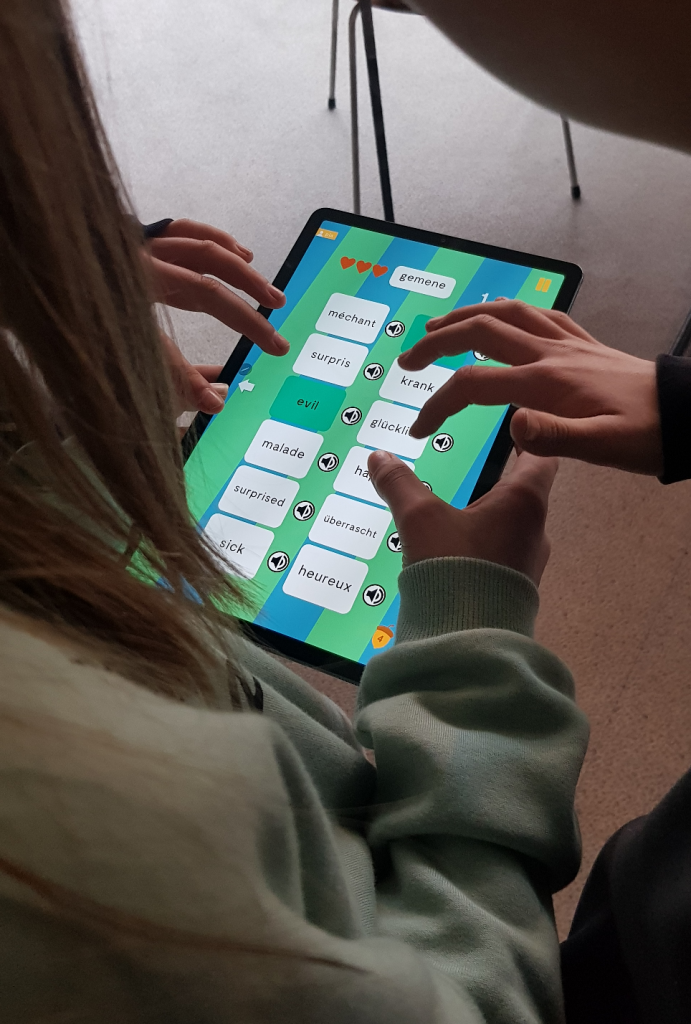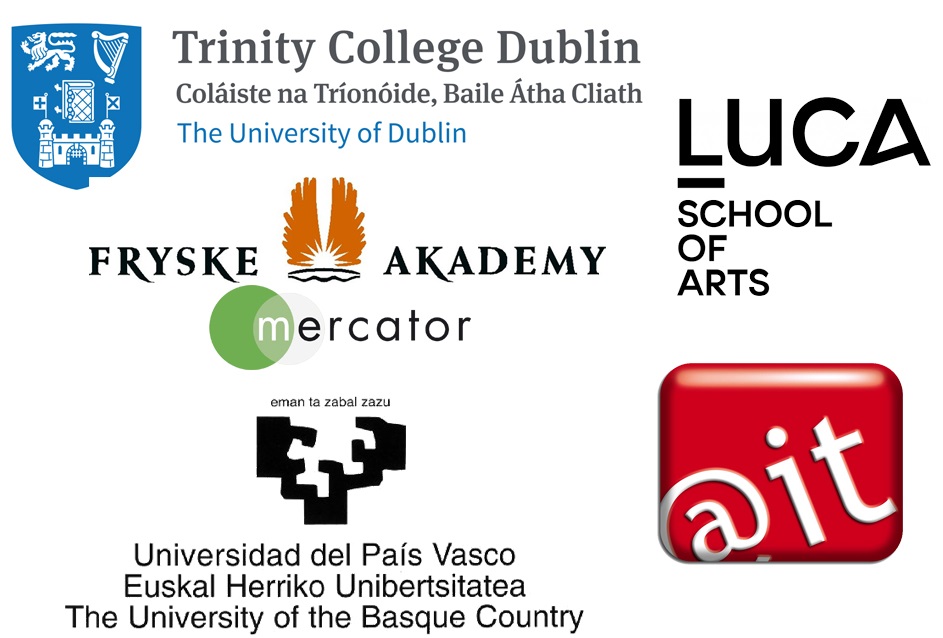On this page you can find more information on:

- Pedagogical aims
- Technical information
- How to play the game
- Examples of multilingual activities
- How multilingualism and BabelAR are applicable in a curriculum and primary learning aims (Netherlands, Belgium, Spain)
You can also watch Wim Forceville & Thomas Meynen, Luca School of Arts explain, play and show the game in our fourth Multiplier Event (starting at 01:58:00).
You can find available translations below each section.
Pedagogical aims of BabelAR
- Activate linguistic knowledge
- Increase language awareness
- Notice language patterns, similarities and differences
- Improve reflective skills regarding languages and cultures
- Learn to work together with other pupils with a shared goal
- Learn to make own choices and to develop personal agency
The BabelAR game has been developed for pupils aged between 7 and 12 years. This game helps pupils to see the value of all languages, especially their home languages. The game is designed to activate their linguistic knowledge. During the game, pupils work together to help a little alien creature named Babel who has sadly lost all of his language knowledge and has been separated from his tribe. Pupils help Babel to collect pieces of his memory and to find his family. BabelAR can be played in/with fourteen languages. Playing this game will develop pupils’ language awareness in a playful and interactive manner, and will foster curiosity about multiple languages. Teachers will enjoy BabelAR as a means of raising awareness of multilingualism in the classroom and its value within education.
Technical information on BabelAR
General
- BabelAR can be played on devices that run on iOS and Android.
- you can check whether your device is compatible here
- The game can be downloaded for free
- look for babelar in your app/play store
- go to BabelAR in the App Store
- go to BabelAR in the Google Play Store
- Want to know if the game fits into your school ICT policy? You can check the privacy policy.
Devices to play BabelAR
- It is not needed to have a tablet or smartphone for each pupil. Though the game can be played alone, it is encouraged to play BabelAR in a group. Per group, one device is needed and the pupils will pass over this device. The game will give the pupils turns to play.
- Our advice is to play in smaller groups, as pupils like to watch and will huddle over the device.
- Because pupils like to watch and huddle over the device, we have also noticed tablets are more suitable than smartphones due to the larger size screen. Nonetheless, it can be played on both tablets and smart phones; whatever is available to you!
Augmented Reality Worlds
- For the Augmented-Reality worlds, it is adviced to use the space available. If there is room, let the pupils stand and walk around the classroom or go outside!
- The AR-projection works best on surfaces:
- with a bit of structure (like carpet, tiles or grass)
- which have good light
- which aren’t too messy
- Sometimes, the AR world is depicted very large or very small. This is due to the device, which has identified the floor as too far away or nearby. A solution could be to try to find a surface with a bit of structure (like a carpet).
Instructions to play BabelAR
- Download the app from the Appstore/Playstore on your phone or tablet
- Pupils can choose their home language(s) and add fellow players via Team setting
- By clicking on New game, the game starts
- The children will be guided through the game with clear instructions by Babel

Pupils have to answer a multiple choice question in a language that is unfamiliar to them. They have to choose the right answer in order to open a portal;
- To get more familiar with these languages and their sounds, the pupils can listen to the words by using the text-to-speech function (🔊)
When the portal has opened, the pupils enter a virtual world where they have to look for the right object;
- It is important that the portal is projected onto an empty floor with enough light. Objects and shadows may obstruct the AR projection.
- Sometimes, the AR world is depicted very large or very small. This is due to the device, which has identified the floor as too far away or nearby. A solution could be to try to find a surface with a bit of structure (like a carpet).
In the main game, pupils can choose to get a hint by pressing the light bulb next to the answers. The hint(s) can help the pupils answer a multiple choice question.
- In exchange for nuts (earned in the minigames), pupils can buy different types of hints.
In addition to the main game, pupils can play minigames to earn nuts. Press the nut in the bottom corner to the right to go to the minigames;
- If the pupil gives the wrong answer, they do not lose their nuts but they can simply try again
Example activities with BabelAR in class
In order to integrate BabelAR into the classroom, the following two example activities have been devised. The activities don’t have a fixed duration and can vary depending on the lessons.
Babel’s animal kingdom
- Divide the class into several groups (max 4/5 pupils) and try to form as many groups as possible with pupils with different language backgrounds;
- Let the children play the BabelAR game;
- After they have finished playing, give each group a category within the ‘animals’ theme (e.g. pets, farm animals, jungle animals, etc.);
- Let the pupils draw animals from their category on a piece of cardboard;
- After that, ask them to write down the names of the animals in as many languages as possible;
- Afterwards, discuss with the whole class what each group has worked on. The pupils from other groups can add to this if necessary.
Babel’s memory
- Divide the class into several groups (max 4/5 pupils) and try to form as many groups as possible with pupils with different language backgrounds;
- Let the children play the BabelAR game;
- After they have finished playing, give each group the attached images of Babel and have the children create their own memory game;
- Let the children play the memory game. When they have found a pair, they have to write down the emotion of Babel on a piece of paper in as many languages as possible;
- Afterwards, discuss with the whole class what each group has worked on. The pupils from other groups can add to this if necessary.
Do you want to share your activities here? Please contact us!
Multilingualism and BabelAR in a curriculum
In these documents, you can learn more how to incorporate multilingualism and BabelAR in your classroom, within the context of the curriculum of the Netherlands, Flanders or the Basque Country.



